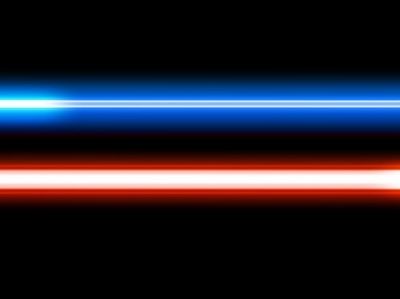High energy intensity in Nano Lasers Nano lasers (structure, performance) based on PhD in Nano _ Microelectronics
Researcher and author: Dr. ( Afshin Rashid)
Note: Another feature of the nano-laser is its high energy intensity at its focal point. Given that nano-laser waves travel in the same frequency, in a straight line and without fuzzy difference from each other, it can be expected that the amount of energy at the focus point is high. According to the report, the energy intensity at this point is more than 0.25 watts per nanometer.
Lasers differ from ordinary light in that these features give them special capabilities and applications. Laser light is brighter and more intense than light in nature . Laser light can crack the hardest metals and easily pass through hard objects such as diamonds and create holes in them. Low power and ultra-thin beams Other types of lasers can be used to perform very delicate tasks such as surgery on the human eye. Laser light can be controlled with great precision and used as a continuous beam called a continuous laser or fast blasts called a pulsed laser . Unlike ordinary light, laser light has a perfectly coordinated energy, which creates a lot of power to do different things. The word laser is the first letter of the words that describe it Its properties have been created, which means that light is amplified by the induced emission of radiation . The difference between laser beam and ordinary light is in the important properties that exist in this beam. These characteristics are: coherence, monotony, directness of high intensity. These properties are not seen in ordinary light and these properties are used for various tasks.
Nano-lasers are limited to electromagnetic radiation emitting devices using light amplification by stimulated radiation emission at wavelengths from 180 nm to 1 mm. The electromagnetic spectrum of a nano-laser includes energy from gamma rays to electricity. Nano-laser beams for current military and commercial applications include ultraviolet, visible and infrared spectra. Ultraviolet radiation for nano-lasers consists of wavelengths of 180 to 400 nm. The visible region consists of radiation with a wavelength between 400 and 700 nm. This is what we call visible light. The infrared region of the spectrum consists of radiation with a wavelength between 700 nm and 1 mm. Nano-laser absorbed by the skin penetrates only a few layers. In the eye, visible and near-infrared radiation passes through the cornea and is concentrated and absorbed into the retina. It is the wavelength of light that determines the visible sense of color: purple at 400 nm, red at 700 nm, and other colors in the visible spectrum. When radiation is absorbed, the effect on the biological tissue of the absorber is photochemical, thermal or mechanical: in the ultraviolet region, this action is mainly photochemical. In the infrared region, this action is at room temperature.
Conclusion :
Another feature of the nano laser is its high energy intensity at its focal point. Given that nano-laser waves travel in the same frequency, in a straight line and without fuzzy difference from each other, it can be expected that the amount of energy at the focus point is high. According to the report, the energy intensity at this point is more than 0.25 watts per nanometer.
Researcher and author: Dr. ( Afshin Rashid)
PhD in Nano-Microelectronics




